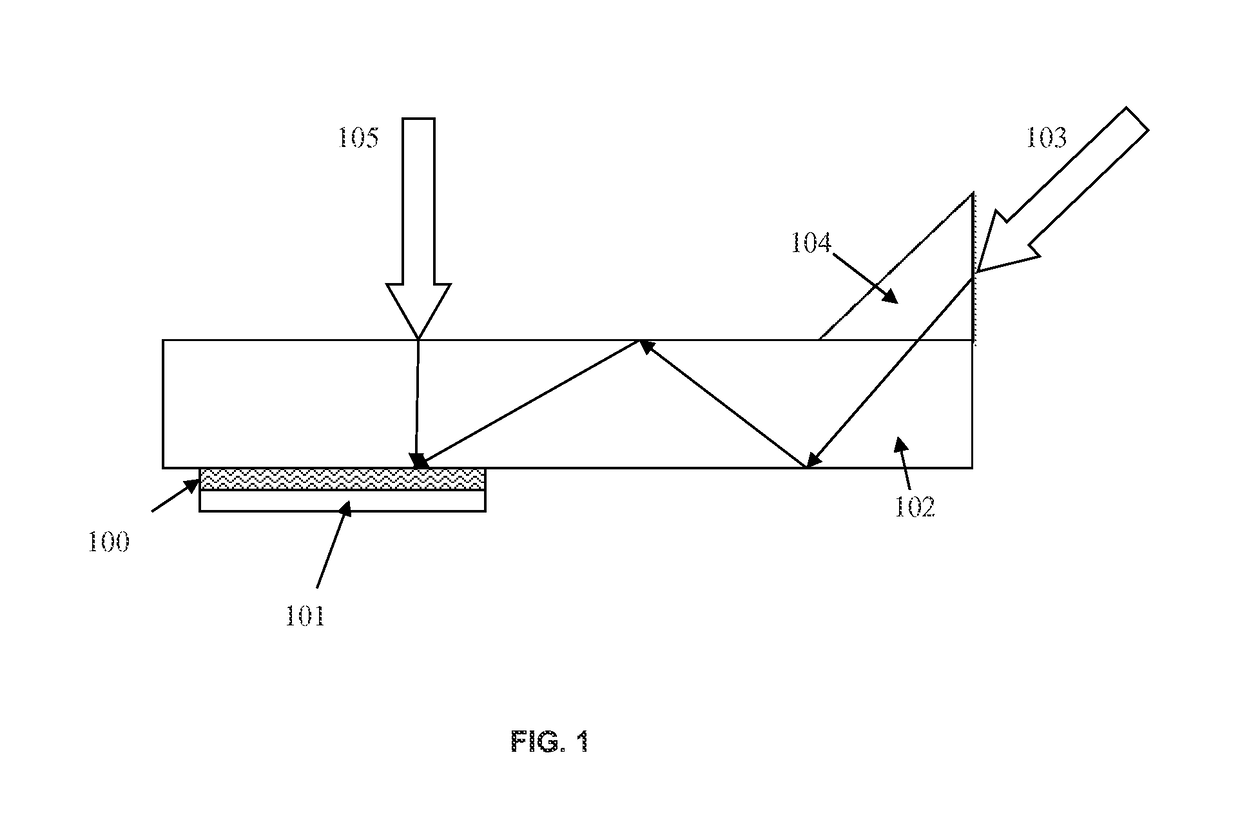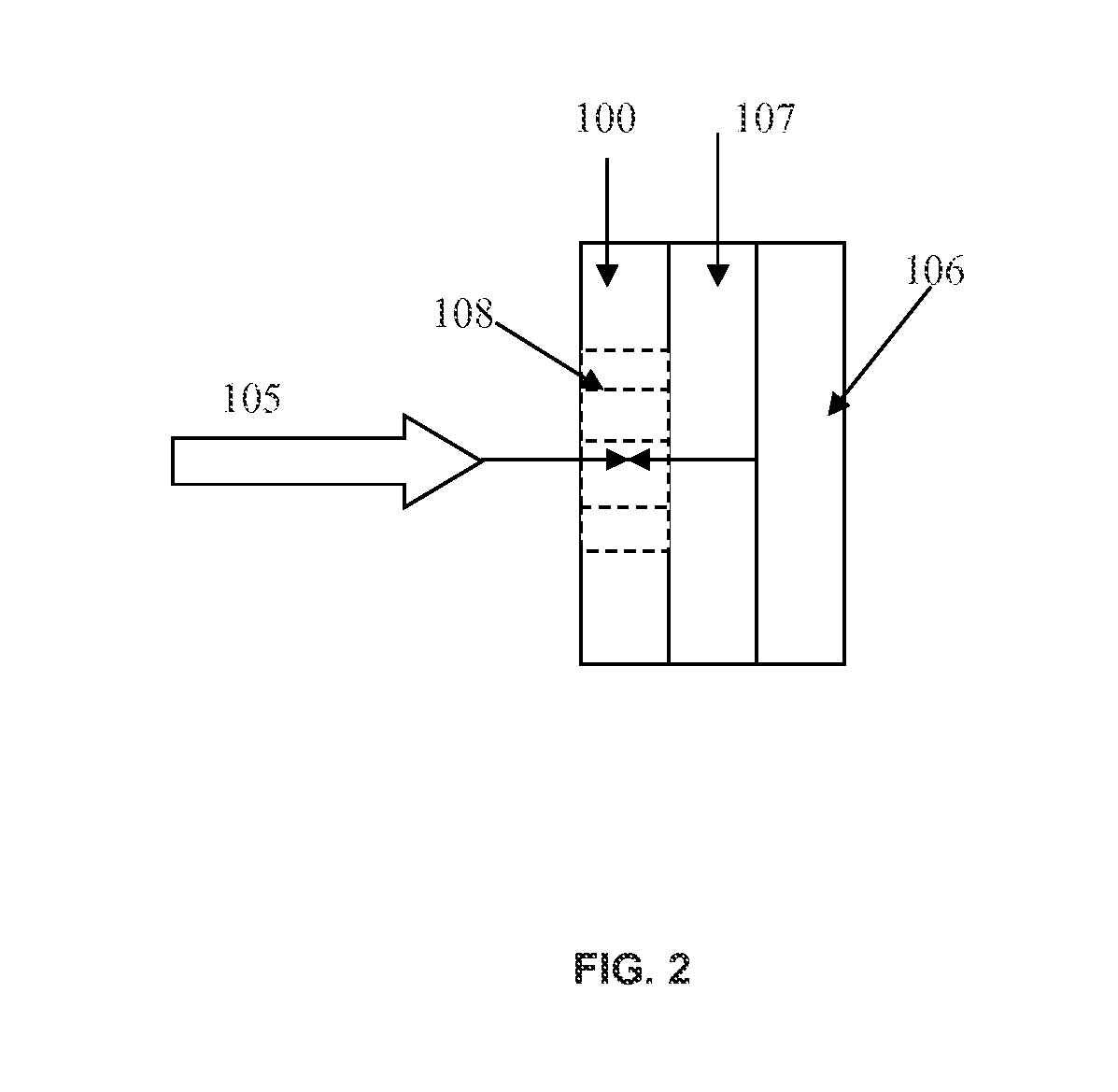Color filter using holographic element
a color filter and holographic technology, applied in the field of optical elements, can solve problems such as undesirable cosmetism, achieve the effects of enhancing color discrimination, enhancing color discrimination, and enhancing the discernment of one or more emissive bandwidths corresponding to the color filter
- Summary
- Abstract
- Description
- Claims
- Application Information
AI Technical Summary
Benefits of technology
Problems solved by technology
Method used
Image
Examples
example 1
[0067]A glass substrate was cut to about 7 inch×7 inch square. The cut glass sheet was cleaned with soap (washing detergent) and water, and then dried by nitrogen gas at room temperature.
Prepare Dichromate Gelatin (DCG) Solution
[0068]In a light controlled (safe red light lamp) environment, 160 ml deionized (DI) water was added to 24 g of 300 bloom gelatin (Great Lakes Gelatin, Greyslake, Ill.) and soaked for about 1 hour. The mixture was then stirred at about 50° C. until the gelatin was completely melted / dissolved (e.g., about 30 min). Eight grams of ammonium dichromate ((NH4)2CrO4) was dissolved in about 40 ml DI water. This (NH4)2CrO4 solution was added slowly to the gelatin solution and mixed for about 30 min at room temperature. The (NH4)2CrO4 / gelatin mixture was filtered through a commercially available coffee filter paper. The filtered solution was kept in 50° C. water bath to prevent solidification.
Glass Substrate Coating
[0069]In a light controlled (safe red light lamp) envi...
example 2
[0075]A second holographic element sample was prepared in a manner similar to that described above, except that the recorded and developed holographic element film was vacuum dried for prolonged time of about 2 hr at 80° C. to control the shrinkage of the holographic element film, resulting in a holographic element film centering wavelength of about 480 nm. FIG. 4 shows the measured transmittance spectrum for the Example 2 film.
example 3
HOE 2
[0076]A 2 inch×2 inch glass substrate of 535 nm centering wavelength and a 2 inch×2 inch glass substrate of 480 nm centering wavelength, prepared as described above, were heated at about 85° C. for about 10 min. About 0.2 ml of UV curable epoxy (NOA86H, Norland Products, Inc.) was placed on the surface of the second prepared glass substrate (480 nm wavelength substrate). The two glass substrates were then deposited on one another (room temperature, and hand pressure) and laminated. FIG. 4 shows the measured transmittance spectrum for the Example 3 film.
PUM
 Login to View More
Login to View More Abstract
Description
Claims
Application Information
 Login to View More
Login to View More - R&D
- Intellectual Property
- Life Sciences
- Materials
- Tech Scout
- Unparalleled Data Quality
- Higher Quality Content
- 60% Fewer Hallucinations
Browse by: Latest US Patents, China's latest patents, Technical Efficacy Thesaurus, Application Domain, Technology Topic, Popular Technical Reports.
© 2025 PatSnap. All rights reserved.Legal|Privacy policy|Modern Slavery Act Transparency Statement|Sitemap|About US| Contact US: help@patsnap.com



